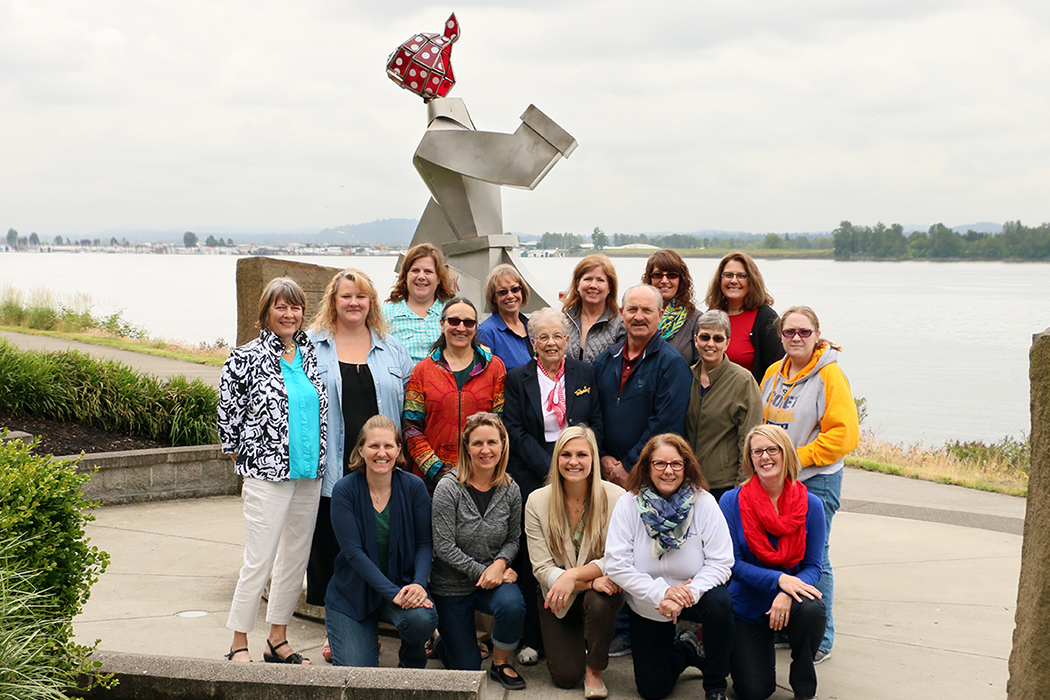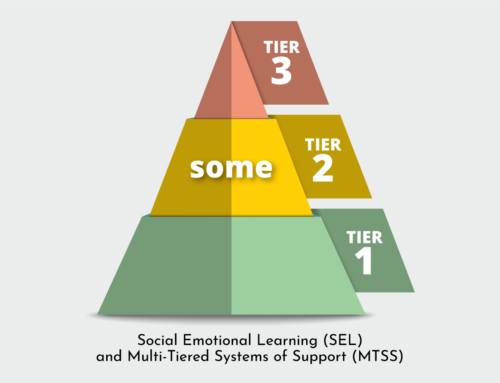An event to celebrate the first year of nPower Girls, a grant-funded program providing professional development for teachers to support girls pursuing STEM (Science, Technology, Engineering, and Math) careers, brought together grant participants and special visitors May 26. Janice Rickard, who was an original riveter for Boeing during World War II, was on hand to share about her life and experiences. Janice joined the group for a celebratory photo at the Wendy the Welder statue on the Vancouver waterfront. Later, Rickard spoke to the group at a luncheon at ESD 112. Brad Richardson, Curator for the Clark County Historical Museum, shared information about the significance of women joining the workforce during World War II.
As the first year of the successful nPower Girls program wraps up, participating teachers celebrated the accomplishments thus far. Teachers in seven school districts have thoughtfully and intentionally invested in supporting girls in STEM this year by learning and sharing exciting STEM career opportunities in our region. Each teacher has conducted their own action research on visual spatial thinking skills and has reflected on how improving those skills can support girls in STEM subjects.
The nPower Girls grant focuses on changing perceptions and providing educators with content and strategies to support their students’ learning. The nPower Girls program reaches girls in grades 4-8 in Castle Rock, Longview, Mill A, Mount Pleasant, Naselle-Grays River Valley, Ridgefield, and Wishram school districts, plus Three Rivers Christian School in Longview.
Research shows that future jobs in the area of STEM will grow faster than jobs in other areas, yet women make up just 23% of the current STEM workforce.
Through the three-year grant, 14 teachers and eight administrators will continue to receive professional development to impact hundreds of girls.
The program was created by ESD 112’s Vickei Hrdina, a former archaeologist and teacher. “When I was working as an archaeologist, I realized how few others there were like me, a woman doing a STEM-related job,” she said. “It was a moving experience for me as a teacher and a mother to examine how to support girls so that they could pursue STEM in their lives. Using engineering and math to solve real-world problems is a skill that all girls should have the opportunity to explore.”
Hrdina says it’s important to recognize inherent biases about careers for girls or boys. Research shows that when girls are mentored by women working in STEM careers, the unconscious bias against women studying math, science and engineering, can be reduced. The grant funding provides teachers with opportunities to meet women in STEM careers and requires them to create programs in their schools that support girls in STEM subjects. Their students will have opportunities to connect with these female mentors.
“The perception that math, science and engineering is for boys, is just that, a perception,” said Hrdina. “nPower Girls aims to change society’s way of thinking and provide girls with real-life examples of young women in the field to make their dreams of working in STEM more relatable,” she added.
In this exciting program ESD 112 math and science specialists are partnering with Clark College, Washington State University, U.S. Army Corps, Mt. St. Helens Institute, and the Southwest Washington STEM Network. Women working in STEM fields volunteer their time to help teachers experience STEM, and communicate to their students what STEM related skills are desired by employers. This way, all teachers are empowered to show young girls that succeeding in a STEM career is possible.





 ESD 112 equalizes educational opportunities for learning communities through innovative partnerships, responsive leadership, and exceptional programs.
ESD 112 equalizes educational opportunities for learning communities through innovative partnerships, responsive leadership, and exceptional programs.